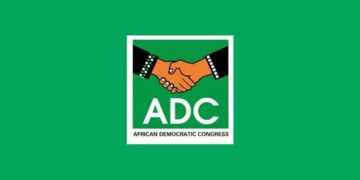According to a report by Afrinvest Research, Nigerian banks and discount houses borrowed 3 trillion naira in one week from the Central Bank of Nigeria through standing credit facilities.
However, lenders and discount houses deposited 493.6 billion naira through standing deposit facilities during the same period.
The report said the increase in borrowings led to a 4.7% increase in system liquidity, which now stands at 712.3 billion naira.

Standing credit facilities and standing deposit facilities are central bank tools to control money supply and liquidity in the financial system.
The central bank issued a new directive to increase lending to the real sector, effective in April, signaling a shift to a restrictive monetary policy approach. Recently, the central bank lifted the suspension of the standing credit facility for authorized dealers following the Monetary Policy Committee’s decision to adjust the ceiling of the standing credit facility to 5% from 1%, around the key interest rate.
Afrinvest added that the increase in borrowing reflects an increased demand for short-term liquidity from banks and discount houses.
However, despite the increase in liquidity, interbank rates showed mixed results, with the open purchase rate declining by 5 basis points to 31.2%, while the overnight rate increased by 3 basis points to 31.7%.
In response to the increase in liquidity, the Debt Management Office cut interest rates last week, creating favorable lending conditions.
Furthermore, Afrinvest Research reported the successful issuance of Nigeria’s first dollar-denominated bond to raise $500 million to address the 2024 budget deficit. The five-year bond was oversubscribed by $400 million, indicating strong investor demand.
Afrinvest analysts believe the rate cut and robust demand for the bond are evidence of growing investor confidence in Nigeria’s financial markets.
They expect these developments to influence market behavior and credit strategies as liquidity continues to evolve.
An economist at Ajayi Crowther University, explained that the central bank acts as a lender of last resort, with liquidity-starved banks typically providing short-term loans at high interest rates.

He noted that frequent borrowing from the central bank could indicate a deeper problem, warning that continued liquidity constraints could lead to serious financial challenges for the bank, including possible liquidation, as seen in the case of Heritage Bank.
“Central banks typically lend at high rates because the loans they offer to banks are short-term. Banks can approach the Central Bank of Nigeria for different reasons. Maybe they are running low on liquidity or have over-traded and need to restore balance. They might also rush to the CBN to cover themselves or take advantage of opportunities in the money market.
“Sometimes, customers come in large numbers, and banks might find that more money is leaving than coming in. This can cause an imbalance. If this becomes a regular occurrence, it can become a big problem. If not handled properly, some banks could even go into liquidation, as we have seen with cases like Heritage Bank,” he added.
David Adonri, a broker and director at HiCap Securities, noted that banks usually resort to borrowing from the CBN’s standing credit facility to address temporary liquidity shortages or take advantage of short-term funding opportunities.
According to Adonri, liquidity in the system could increase if maturing short-term government debt is repaid, Federal Account Allocation Committee funds are distributed, or deposit liabilities increase. He noted that these measures could inject funds into the banking system and increase overall liquidity.
“CBN is a lender of last resort. Banks usually have recourse to SLF to borrow from CBN to meet temporary liquidity shortfalls or to finance emerging short-term opportunities. Whenever maturing short-term public debt is redeemed or FAAC is distributed or deposit liability increases, system liquidity can rise,” he said.
He also stressed that increased borrowing through the standing credit facility could increase liquidity in the banking system in the short term. He, however, warned that this could be detrimental to banks, saying: “The interest obligation arising from such borrowing can harm a bank’s treasury if the on-lending does not cover the interest expenses.
“Moreover, the injection of large sums of money into the banking system within a short period may contradict the CBN’s policy goals.”
Adonri stressed that this could undermine the central bank’s efforts to raise the reserve ratio and neutralize restrictive monetary policy.
He noted the CBN’s management of bank liquidity, saying, “Bank liquidity is controlled by the CBN’s policy on liquidity ratio. As the aggregate assets of banks increase, aggregate liquidity amounts also rise. Liquidity is a moving target.”

































